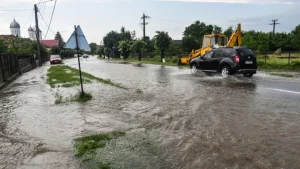In managing flood zone projects, flood zone project management tips play a crucial role in ensuring the success of these initiatives. Creative design is vital as it not only addresses immediate flood risks but also transforms these areas into resilient, functional, and aesthetically pleasing spaces. Incorporating features like porous pavements, raised walkways, and durable materials strengthens flood control measures. However, it raises the question of how these innovations hold up during unexpected flood events. What additional benefits do they bring to the community and the ecosystem they protect? This prompts an in-depth exploration of how strategic design shapes the effectiveness of flood zone management.
Key Takeaways
- Creative design incorporates elevated structures and permeable materials to enhance flood resilience and reduce environmental impact.
- Utilizing native landscaping in designs supports local ecosystems and mitigates flood risks.
- Innovative use of sustainable materials boosts community pride and encourages local engagement in flood zone projects.
- Design strategies that balance aesthetic appeal with functionality attract community support, crucial for project success.
- Continuous community involvement in the design process ensures adaptive strategies meet both environmental and societal needs effectively.
Understanding Flood Zone Challenges
Understanding the challenges associated with flood zones is pivotal for effective project management in these vulnerable areas. Acknowledging the unpredictability of water levels and the impact on local ecosystems leads to more sustainable practices. By fostering community involvement and adopting adaptive strategies, stakeholders can feel a sense of belonging and contribution to resilience efforts, ensuring that flood zone project management tips cater to both environmental and societal needs.
Role of Creative Design in Flood Zones
Integrating creative design into flood zone project management not only enhances aesthetic appeal but also greatly bolsters the functionality and resilience of infrastructure. By thoughtfully incorporating natural elements and sustainable materials, designs can harmonize with local ecosystems, fostering community pride and a sense of safety. Such innovative approaches guarantee that development is both environmentally attuned and culturally connected, inviting widespread community support.
Essential Design Principles for Flood Management
Building on the role of creative design in enhancing flood zone resilience, it is imperative to focus on specific design principles that underpin effective flood management. Emphasizing permeable materials, elevated structures, and native landscaping can greatly mitigate risks. These strategies not only protect but also harmonize with the environment, fostering a sense of community and stewardship among those impacted by flood zones.

Implementing Innovative Solutions in Construction
Innovative construction methods play a pivotal role in flood zone project management, where adaptation to climate challenges is essential. Embracing eco-conscious technologies and materials, contractors can fortify structures against water damage while preserving natural habitats. Techniques such as elevated platforms and permeable pavements not only protect developments but also integrate them harmoniously with the environment, fostering a sense of community and stewardship among residents.
Evaluating Project Success in Flood Prone Areas
Evaluating the success of projects in flood-prone areas requires a meticulous approach, focusing on both the resilience and sustainability of the constructed environments. Effective flood zone project management tips emphasize community integration, using innovative, environmentally sensitive designs that not only withstand natural disasters but also enhance local ecosystems. Success is measured by how well these spaces foster safety, connectivity, and ecological harmony among residents.
Frequently Asked Questions
How Do Flood Zones Affect Insurance Rates for Construction Projects?
Flood zones greatly impact insurance rates for construction projects, as areas with higher risk of flooding typically incur increased premiums to mitigate potential losses, emphasizing the need for detailed risk assessment and management strategies.
What Are the Legal Implications of Building in Flood Zones?
Building in flood zones requires adherence to stringent legal regulations, including obtaining appropriate permits and ensuring construction complies with local, state, and federal floodplain management laws to mitigate environmental impact and community displacement risks.
How Frequently Should Flood Zone Maps Be Updated for Accuracy?
Flood zone maps should ideally be updated regularly, at least every five years, to reflect changes in topography, climate conditions, and urban development, ensuring accuracy in risk assessment for effective planning and safety measures.
Can Flood Zone Status Impact Property Resale Values for Developers?
Flood zone status considerably impacts property resale values for developers, as areas prone to flooding attract lower prices and fewer buyers, affecting long-term investment returns and planning strategies in real estate development.
What Emergency Response Plans Are Required for Flood Zone Sites?
Emergency response plans for flood zone sites must include evacuation routes, shelter strategies, and communication protocols, ensuring safety and rapid response to mitigate risks associated with flooding, tailored to the specific vulnerabilities of the area.
Conclusion
In summary, the integration of creative design within flood zone project management not only addresses functional resilience but also enhances ecological harmony. By adopting innovative and sustainable design principles, contractors can greatly mitigate flooding risks while fostering community engagement and environmental stewardship. Such practices not only safeguard infrastructure but also enrich local ecosystems, making them vital for future-oriented, resilient urban planning. Evaluating these projects’ success is essential to refining and advancing flood management strategies.
You May Also Like To Read:









